Patek Philippe launched Ref. 6301P Grande Sonnerie, its first model with a grande sonnerie not combined to other complications. Price is CHF1150000.
Patek Philippe launched today its first wristwatch with a grande sonnerie not combined to other complications, the Ref. 6301P Grande Sonnerie.
This highly sophisticated timepiece features a grande sonnerie that automatically strikes the full hours and the quarter hours as well as a petite sonnerie (that does not strike the quarter hours), a minute repeater (that strikes on demand), and a patented jumping subsidiary seconds.
The 703-part movement is housed in a platinum case with a diameter of 44.8 mm and a thickness of 12 mm.
The design is inspired by the Ref. 5370 split-seconds chronograph presented in 2015, with its concave bezel, slightly cambered sapphire-crystal glass and countersunk satin-finished flanks.
Like all Patek Philippe platinum cases, it sports a small diamond set in this case at 12 o'clock because the usual 6 o'clock position is occupied by the slide switch for selecting the strikework mode. The case is not water-resistant but humidity- and dust-protected only.
The black grand feu enamel dial is characterised by a “glacé” finish, applied Breguet numerals, and leaf-shaped hands in luminescent white gold.
At 3 and 9 o'clock we find two power-reserve semicircular indicators for the movement and the strikework identified with the inscriptions MOUVEMENT and SONNERIE.
Visible through the sapphire-crystal case back, the new 3,5 Hz (25,200 vibrations per hour) hand-wound caliber GS 36-750 PS IRM fulfills all the requirements - technical and aesthetic - of the Patek Philippe Seal.
Special attention was devoted to the design of the movement bridges, especially the barrel bridge (a key element of grande sonneries) and the transversal balance cock (balance bridge), a Patek Philippe rarity that assures a secure seat and pleasing visual proportions.
The antireflective sapphire-crystal back positioned very close to the movement offers a fascinating glimpse into a micromechanical realm. It can be replaced with a solid platinum back that is delivered with the watch.
Unlike in minute repeaters which must be triggered on demand by actuating a slide or a pusher, the grande sonnerie needs to have sufficient reserve power to automatically sound the required number of time strikes with uniform acoustic quality.
To address this challenge, Patek Philippe endowed the caliber GS 36-750 PS IRM with two tandem-connected twin mainspring barrels, one for the going train and the other for the chiming mechanism. This configuration delivers a power reserve of 72 hours for the movement and of 24 hours for the strikework.
The 24-hour power reserve for the strikework allows the watch to strike the full hours and the quarter hours during an entire day and thanks to a uniform torque characteristic to assure optimized sound intensity. The two twin mainspring barrels are wound with the crown pushed in and rotated clockwise to wind the going train and counterclockwise to wind the strikework. The four mainsprings feature slip bridles to avoid overtensioning.
The three classic gongs – low, medium, high – must not touch one another nor other parts of the case or movement despite the compact space in which they hover. Three hammers of identical size and mass guarantee a uniform strike for all three pitches.
The hours are struck on a low-pitched gong, the quarter hours with a three-strike high-low- medium sequence. The melody for the first quarter hour (15 minutes) sounds once, for the second quarter hour (30 minutes) twice and for the third quarter hour (45 minutes) three times. Each quarter-hour sequence is automatically preceded by the number of elapsed hours, and followed by the number of quarter hours.
Thanks to the energy stored in the twin mainspring barrel of the strikework, the Grande Sonnerie strikes an impressive total of 1056 strikes in 24 hours.
The owner can also select the strikework mode petite sonnerie; it strikes the full hours but omits the repetition of the hours when striking the quarter hours. In the silence mode, the automatic time strike is switched off altogether.
The selection of the strikework mode is performed with a single slide switch in the caseband at 6 o'clock. Two slide switches were formerly required for this operation. This special feature is the subject of a patent. The petite sonnerie mode is on the left adjoining the grande sonnerie mode in the middle and silence on the right.
In the silence mode, a special mechanism (for which a second patent has been filed) totally isolates the grande sonnerie from the power flow and eliminates energy consumption.
On request, the minute repeater can be triggered by pressing the pusher in the crown at 3 o'clock. In response, it strikes the number of hours with low tones, the quarters with three-strike sequences (as in the grande sonnerie mode), and, on the higher-pitched gong, the number of minutes that have elapsed since the last quarter hour. The minute repeater can be triggered at any time, even if the slide is set to the silence mode.
The small jumping seconds display at 6 o'clock is a complete first for a grande sonnerie wristwatch. Its patented mechanism uses wheels and a release lever to instantaneously unblocks the wheel train every second and features a coiled return spring as the only power element. The advantage of this system is that it makes energy consumption easier to regulate and control.
Matched to a hand-stitched shiny black alligator strap with square scales and a fold-over clasp, the Patek Philippe Ref. 6301P Grande Sonnerie has a price of CHF 1,150,000. The new model is not a limited edition but, given its complexity, its production will be naturally limited to a few pieces per year. patek.com










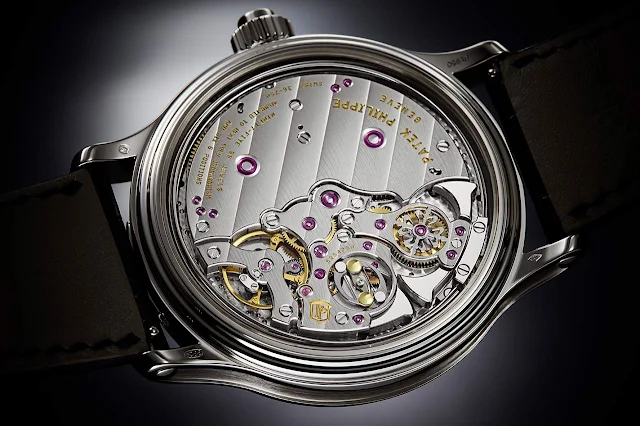

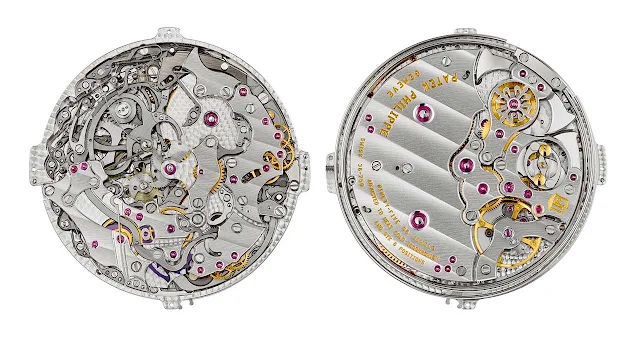
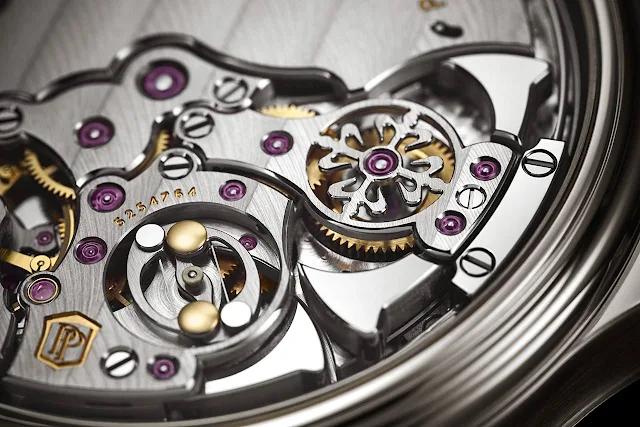


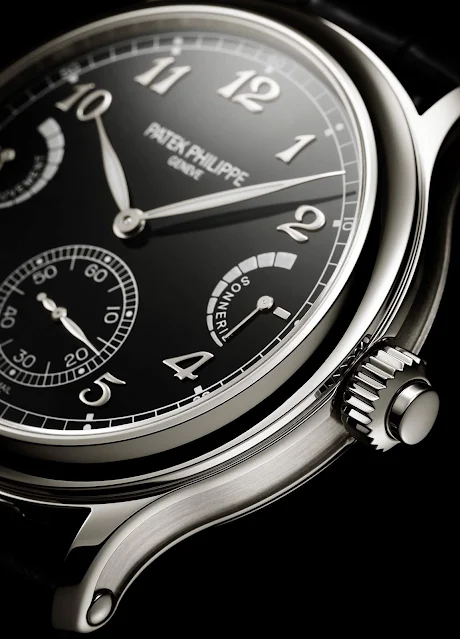


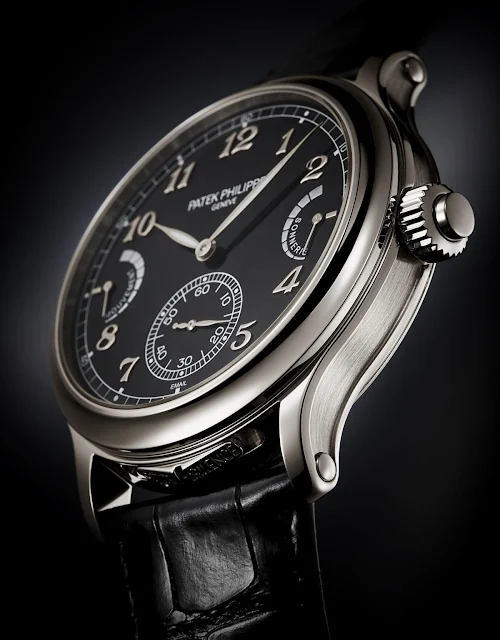








Impressive watch for many reasons although I would not say that is visually memorable. I think the two symmetrical power reserve indicators do not blend harmoniously with the dial.
ReplyDelete